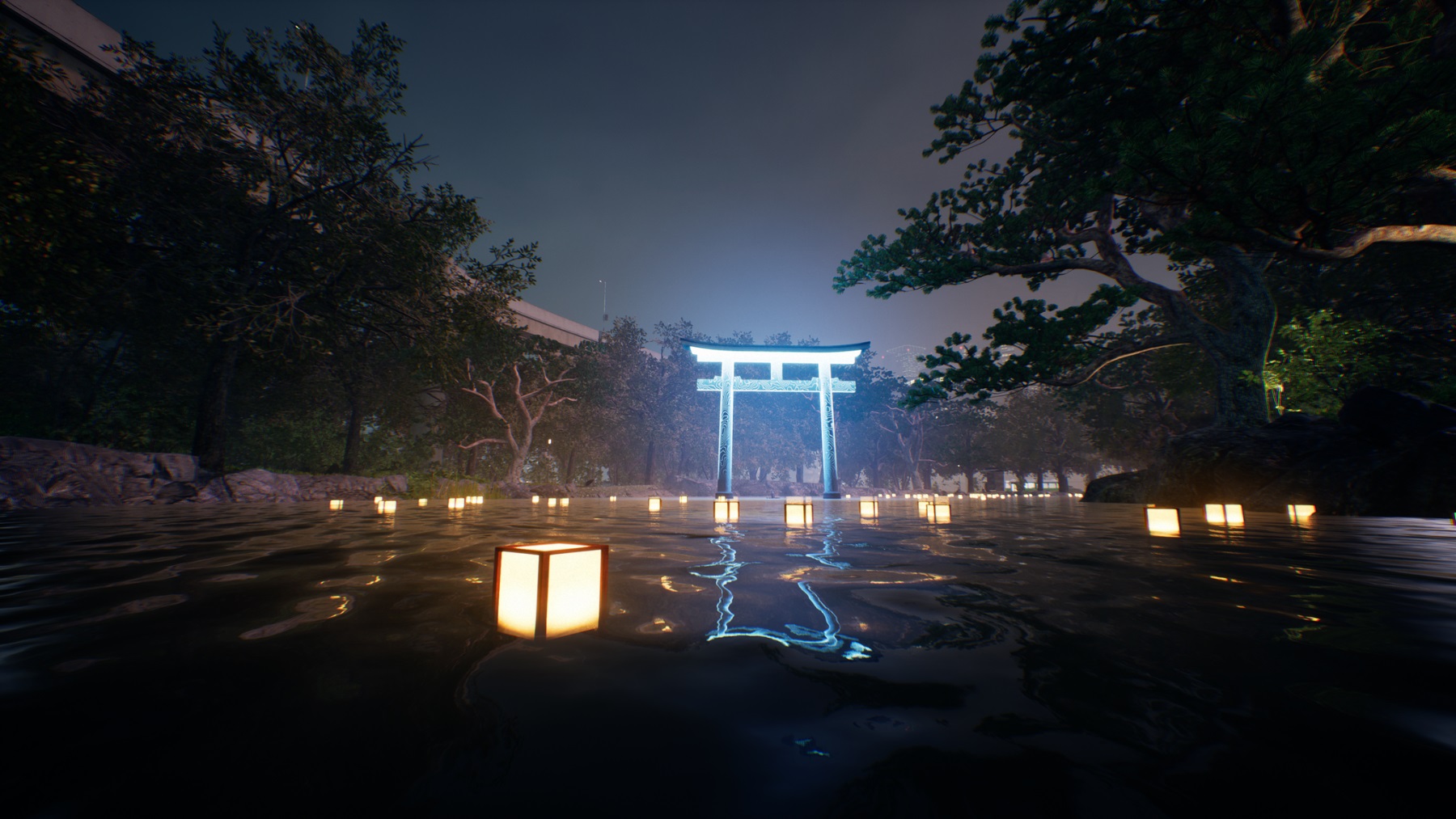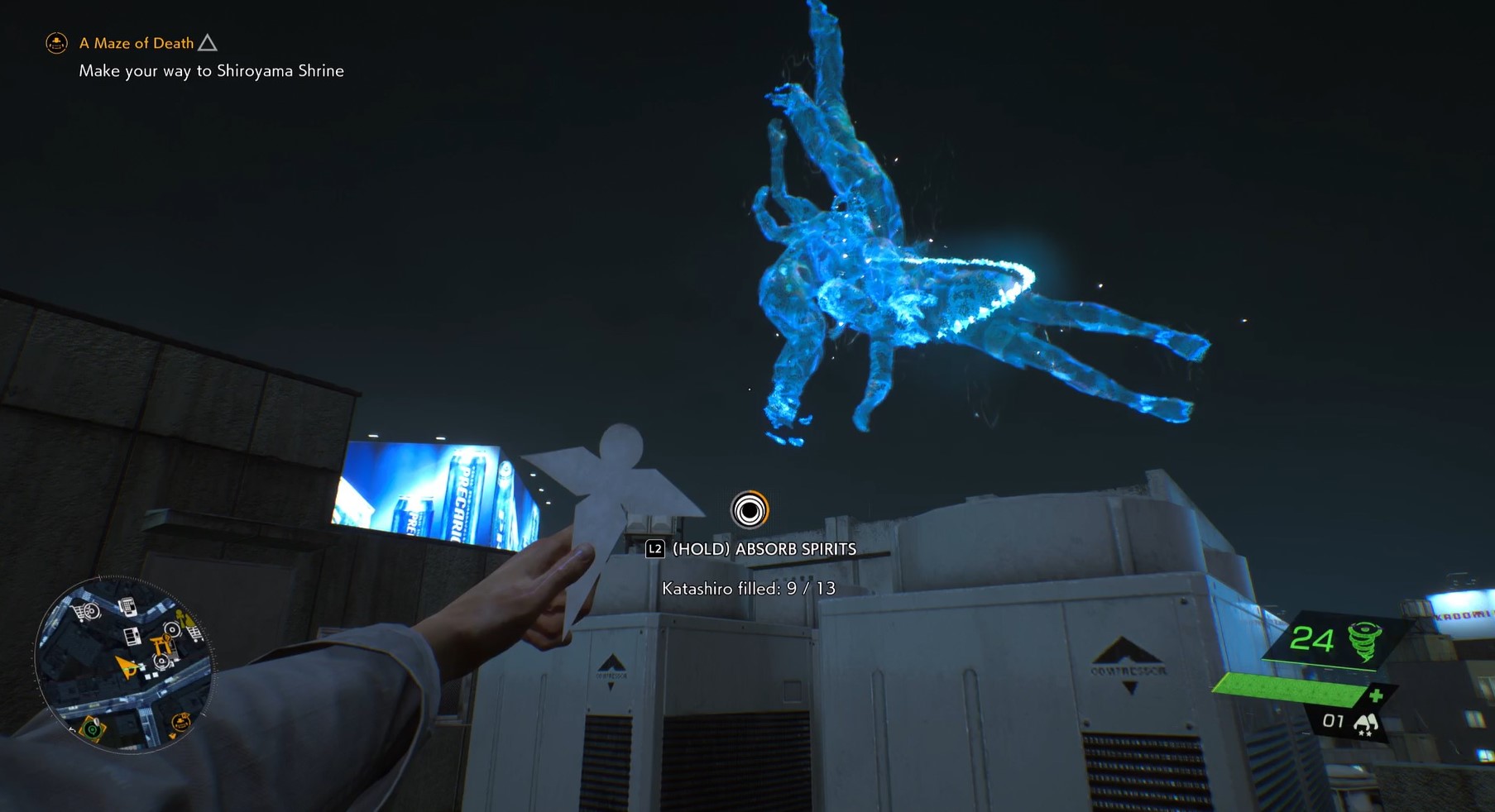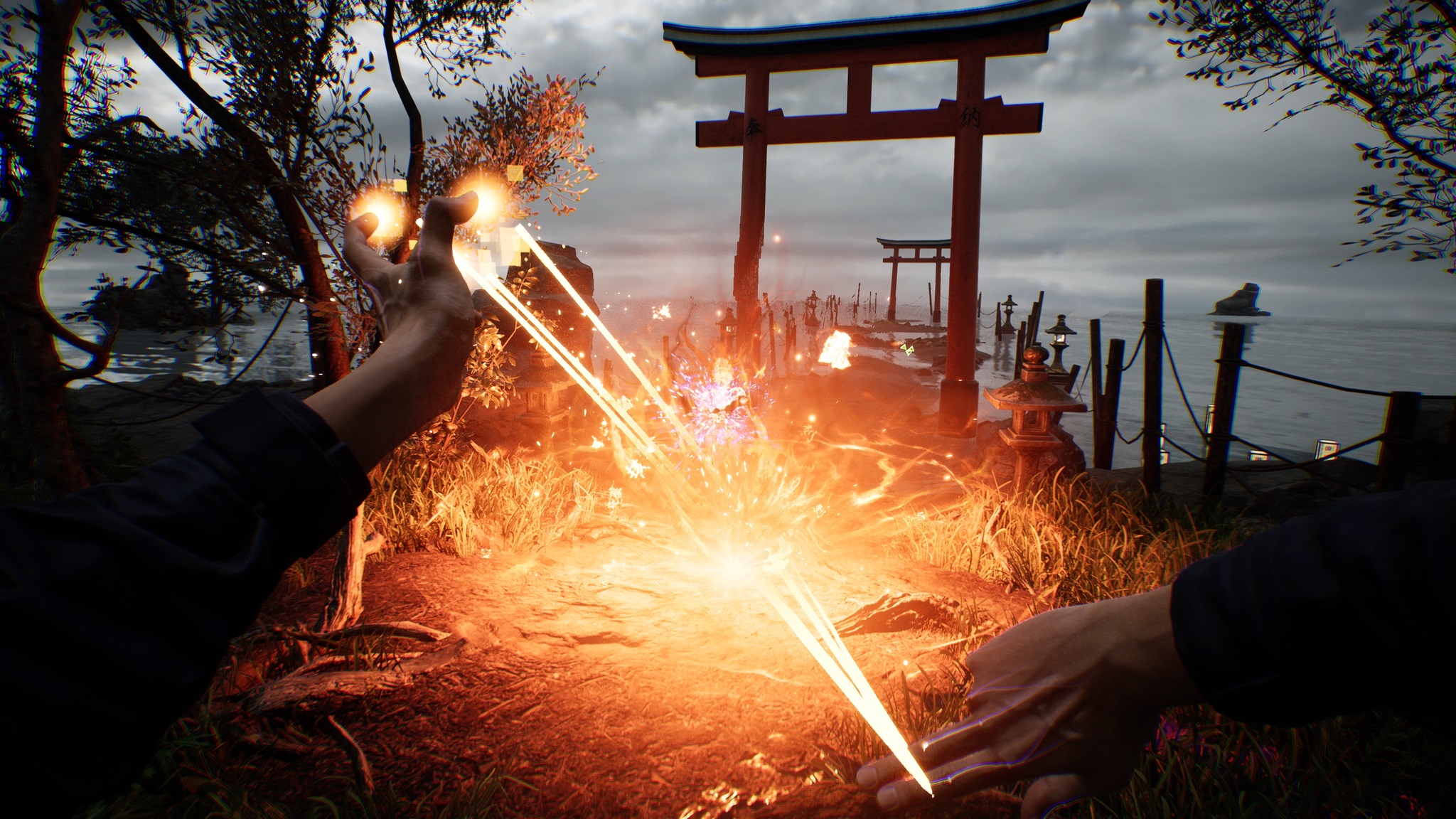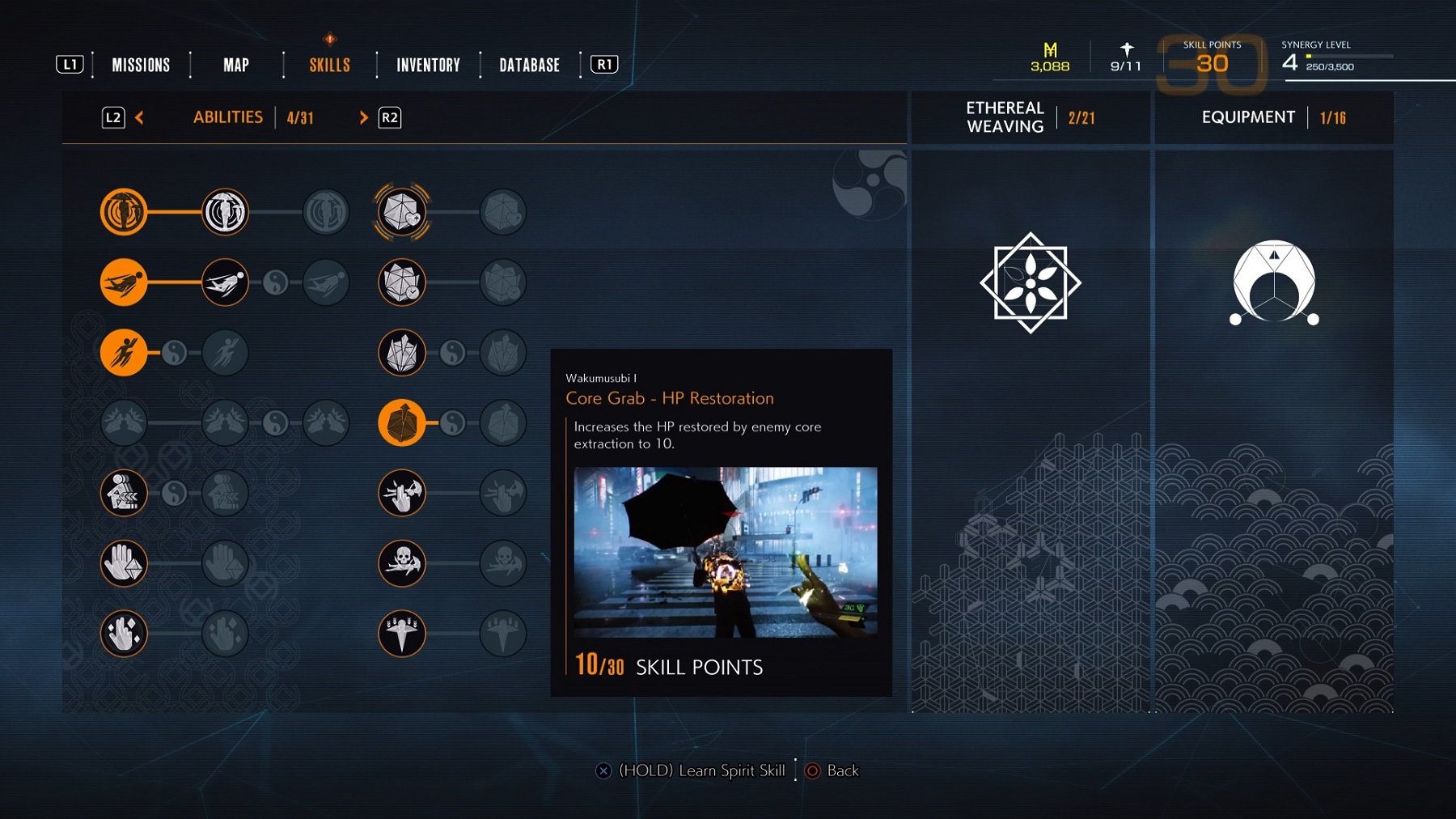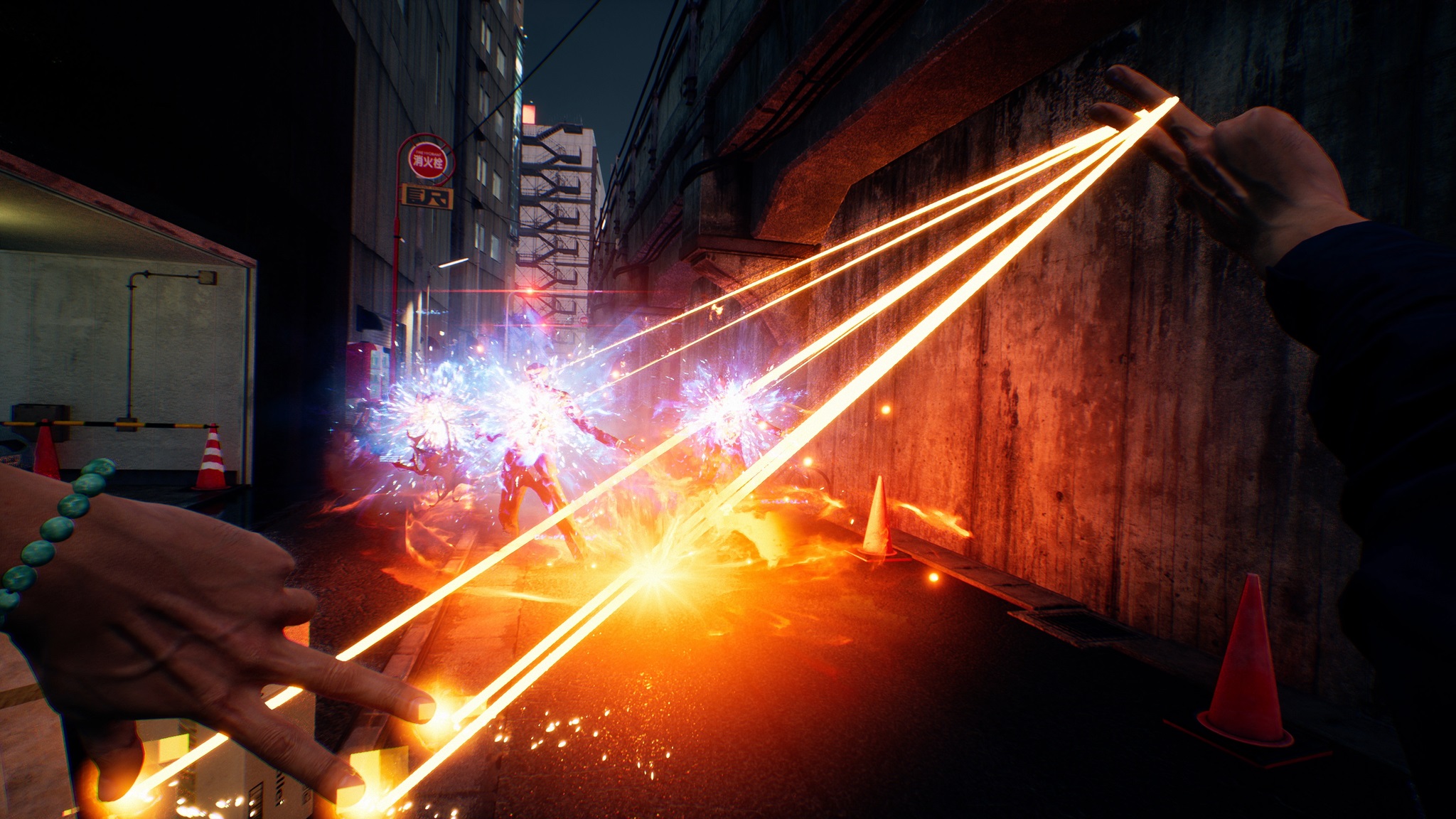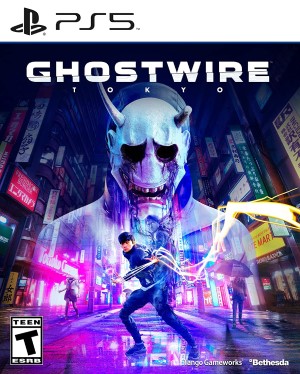
Tango Gameworks’ first person open world action-adventure game Ghostwire: Tokyo is launching on March 25 for PS5 and PC, and over the last few days, I’ve been playing it. Courtesy of Bethesda, here, I’ll be sharing my impressions of the game’s first two chapters, which I got through in roughly five hours, and some of my biggest takeaways from those first five hours of the experience.
IT’S NOT HORROR
Let’s get this out of the way right off the bat- Tango Gameworks has, until now, been known as a survival horror specialist studio, as the developer of the Evil Within games. For a while, however, the developer has insisted that Ghostwire: Tokyo is not going to be a horror game, and that is very much something you should keep in mind as you head into it. There’s definitely some spooky stuff going on in Tokyo, and Ghostwire can often make your skin crawl with some strong horror-esque tones, but by and large, this is very much focused on action and open world exploration.
KK AND AKITO
There isn’t much I can say about Ghostwire: Tokyo’s story, on account of wanting to avoid spoilers, but the thing that has stood out to me so far that I can talk about is the dynamic between KK and Akito, the two main characters of the story. Akito is the protagonist, a human stuck in a Tokyo that’s been engulfed in a fog that’s making people vanish, and KK, the lingering spirit of a dead detective, decides to make himself at home in Akito’s body. Their relationship and interactions early on in the game are tense, and at times even hostile, but circumstances bring them together and they begrudgingly accept that they need each other’s help to accomplish their own personal goals. That change in dynamic has, until now, led to some fun interactions and quick banter between the two characters, often even during the course of gameplay at some innocuous little moments you wouldn’t expect, and I’m certainly excited to see how that bond develops.
OPEN WORLD STRUCTURE
After having experimented with semi-open world sections in The Evil Within 2, Tango Gameworks has gone for a full-fledged open world structure in Ghostwire: Tokyo. Soon after you get past chapter 1, the open world of Shibuya becomes available to you- though not all of it at once. Ghostwire takes the concept of fog of war almost literally- the city is engulfed in a strange fog, and the moment you enter it, you begin taking damage. Stay in it for too long, and you’re dead. That fog acts as a wall that sequesters you into a small portion of the open world map, that you can then expand by cleansing torii gates scattered throughout the city, making more of it available to explore. While the restricted nature of the open world might disappoint some, it does create a consistent forward momentum, while you also get the opportunity to clear off larger sections of the map as you play more.
EXPLORATION
So what exactly is exploration in Ghostwire: Tokyo like? Well, based on chapter 2, the movement is actually pretty basic- you can run and jump and crouch, though the game’s making use of that limited movement in interesting ways. The world of Ghostwire: Tokyo is surprisingly vertical- though I guess that makes sense, given that it’s set in Tokyo. There’s a lot of tall buildings that you can climb up to get to the rooftops, and these rooftops feel like an entirely separate layer on top of the open world map. There are also flying tengu spirits scattered across the world that you can grapple to to get straight to higher points. So far, moving through the open world of Ghostwire: Tokyo has felt rather unique in how freely it’s allowing me to alternate between exploring the streets while weaving in and out of alleys and jumping across rooftops and climbing to vantage points. The game also gives you a glide ability, which allows you to glide after jumping for a few brief seconds, making traversal across rooftops even more viable. So far, I’ve found the glide itself a little too floaty, but while I’m not a huge fan of how it feels, I’m hoping making progress in the skill trees will allow me to unlock improvements.
SPIRITS
Spirits are, in a way, the main impetus for exploring the world of Ghostwire: Tokyo, and have almost just as big of a role to play in the game’s progression mechanics. While Akito, thanks to KK, has managed to survive the effects of the fog blanketing Tokyo, pretty much every other person in the city has vanished. Scattered throughout the open world, you’ll find spirits that you can absorb using katashiros, after which you can send them outside the city using payphones to help restore them to their bodies. There’s thousands of spirits scattered throughout the game- and I mean thousands. As I explored a decent chunk of the map throughout chapter 2 of Ghostwire: Tokyo, the game told me that there were over 240,000 spirits in total to collect. Explore the city and you’ll find them scattered about the rooftops, hidden in back-alleys and corners, or being attacked by enemies, while completing quests and side quests rewards you with more spirits as well. Every time you free spirits using a payphone, you’re rewarded with meika, which you can spend at vendors, and XP, which helps unlock more skill points. Smartly, Ghostwire: Tokyo allows you to expand your pool of katashiro as well – you can purchase more of them from vendors, or get them from cleared torii gates – which means you can explore for longer periods and gather a larger pool of spirits before having to return to a payphone to free up your katashiros.
SIDE ACTIVITIES
Beyond hunting for spirits and jumping across rooftops, Ghostwire: Tokyo’s chapter 2 offered me a decent selection of optional content. There are side quests, as you’d expect, and their quality so far has varied. Some have been quite interesting, offering unique stories or focusing on interesting ideas or mechanics, though a couple so far have been fairly straightforward and largely forgettable. It’s definitely a net positive, and I’m tempted to track down every side quest that becomes available (and there’s been a decent number of them until now), even if nothing’s blown me away. Meanwhile, you can find collectibles, some of which can be sold at certain shops; you can clear areas of corruption throughout the city, which rewards you with larger clusters of spirits; and you can find and pet animals, and even read their thoughts. Meanwhile, finding new torii gates to make more of the map available is also something that I have enjoyed doing in the time that I’ve spent exploring the open world. Obviously, none of that is ground-breaking by any means, but though Ghostwire: Tokyo’s open world is quite formulaic, it’s still fun to explore and move through- until now, at least, and I sure hope that keeps up.
PROGRESSION
Like pretty much every other open world action-adventure game these days, Ghostwire: Tokyo incorporates light RPG mechanics for its progression system. Collecting spirits and completing quests rewards you with XP, which, in turn, increases your Synergy Level. Every time you level up, you get skill points that you can use to unlock skills and abilities across different trees. Certain, more powerful upgrades, meanwhile, need to be unlocked using Magatama, which is a pretty rare resource. Meanwhile, there’s meika to earn by exploring the world and completing quests and side quests, which is then used to purchase various items and consumables from yokai vendors scattered across the map. Speaking of consumables- while the most immediate purpose of consuming food in Ghostwire: Tokyo is to restore health, interestingly enough, every time you do that, your max HP also goes up a little, which is a unique twist to the healing mechanic. Meanwhile, a certain variant of consumables known as spectral food can provide other perks when consumed as well, such as increasing your damage, or increasing your perfect parry window.
COMBAT
Combat in Ghostwire: Tokyo has been a big mystery in the lead-up to launch, but after five hours with the game, I’ve found it fairly straightforward. Your main weapon is Weaving, which is basically magic that comes in several elemental variants, like wind or fire. A bulk of what I’ve played so far was spent with wind very much being my primary weapon- and it essentially functions as a gun, if we’re talking purely about the mechanics. You aim and shoot projectiles, and your pool of ammo depletes with each shot, though you can restore it by pulling cores out of enemies or destroying certain corrupted items floating in the world. It’s fun, but I feel like the moment-to-moment gameplay is, at its core, just a shooter that replaces guns with magic. Of course, as I learn new abilities and unlock more elements for Weaving, there’s every chance that combat will become more nuanced, so I’m hoping it’s the kind of system that seems straightforward at first, but opens up as I get further in the game. So far, there’s been plenty of enemy variety as well, from both a visual perspective and in terms of how they function in combat, so hopefully the game will keep introducing more new freaks and monstrosities as I progress further into it. Meanwhile, there are some rudimentary stealth mechanics that haven’t really made much of an impression so far, though the addition of a bow presents an interesting alternative for some short moments. Finally, melee combat has been inconsistent until now- while blocking in the right window to get a perfect parry feels satisfying, having to click the right stick to do a melee attack feels clunky.









